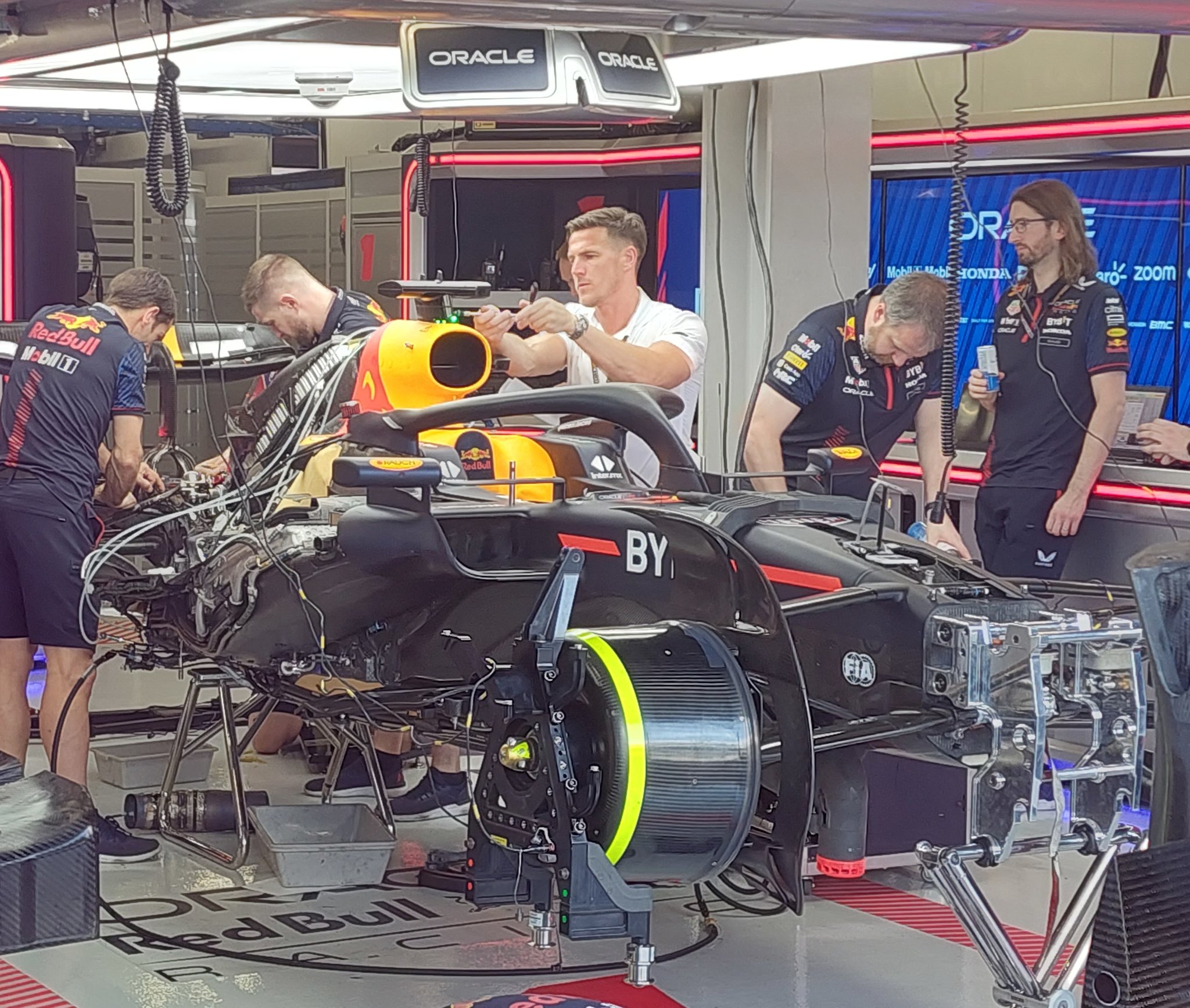In my view, RB18 evolved into RB19 with just one important change - rake is practically gone, thus bringing the tunnel throat back to "intended" ride height (negating 10mm raise with 2023 rules). After this, other changes were details and improvements.
Everything else is built around the ability to ride as low as possible without too much wear on the plank. The entire floor must be structurally designed around this, I assume. The suspension is updated to support this, as well as provide its main function and provide optimal working window for the tyres.
I have a feeling RB team, lead by Newey, paid special attention to aligning all the ride height factors and bringing them to near equilibrium at all times. Tyre deformation and suspension travel are influenced not only by weight (lowest in Q, starting at near max in the race and dropping back low again) but now even more by effective floor throat height and resulting floor downforce values. Perez was 190kmh through T22 in Q, 165kmh in L3 and 175kmh in his fastest lap (less fuel, but Hard tyres). 190kmh means potentially 33% more downforce than at 165kmh, so almost 300kg more.
What happens with suspension travel at those speeds? Is the car already riding as low as possible? Or is there 5-10mm more travel available? How much does the car lower with those extra 300kg of downforce? If it goes lower, how much more downforce can the floor generate? How to keep the car level and prevent roll for optimal aerodynamic performance? And that's just the basic questions

Lot's of work went into refinement and understanding the setup and how to optimise the floor operation, no doubt. RB likely spent the most of their aero time making sure the floor performance is aligned with optimal ride height at all times, both in Q and race.


